A few years ago, I wrote about the tiny houses of Christiania in Copenhagen, Denmark. I was in Copenhagen again visiting family for the holidays and stopped by one of my all-time favorite communities again to photograph some of the tiny houses that dot this autonomous neighborhood. Christiania is a small community located within the city of Copenhagen where the 850 residents don’t pay property taxes, allowing them to build their own homes and create their own colorful architecture.
This place is a building inspector’s ultimate nightmare and a tiny house lover’s dream come true. Many of the tiny houses of Christiania were built utilizing already existing structures that were left over from when this area used to be a military base. The structures were added to with salvaged materials or items tossed out by non-Christiania residents. Other homes are created out of German bauwagens, boats, random windows, sheds or greenhouses. Since Christiania is also located in a park-like area with a large lake, residents take advantage of this and build some homes on floating platforms. I spoke to a Christiania resident about how to obtain a home or land in this free form community. He said it’s extremely difficult and you either have to know someone or you have to have grown up in the area to get hold of some land to build a house. Many residents stay for their entire lives and only give up their home to a friend or family member.
Photos by Christina Nellemann
By Christina Nellemann for the [Tiny House Blog]
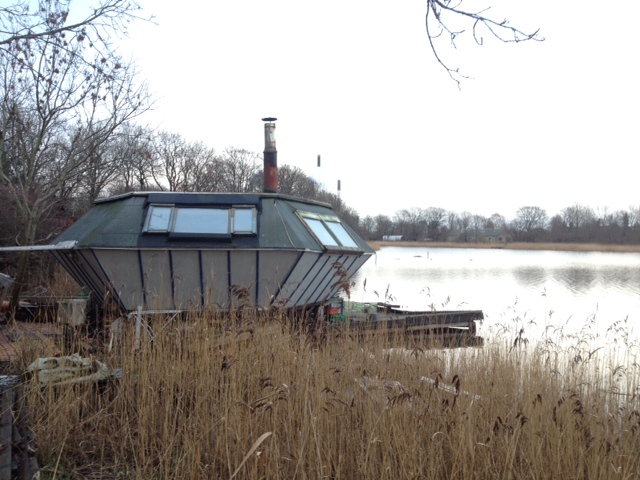
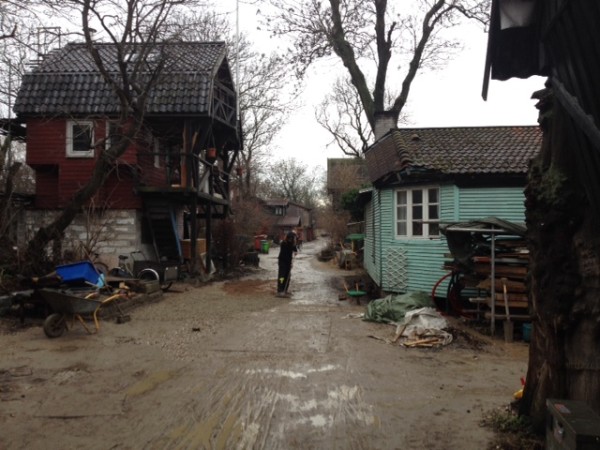


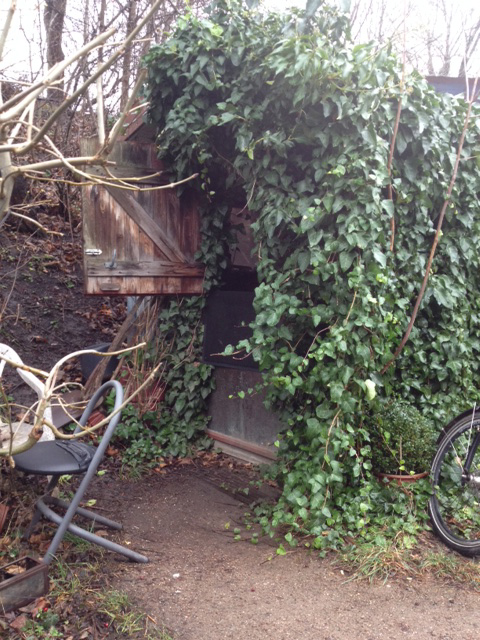

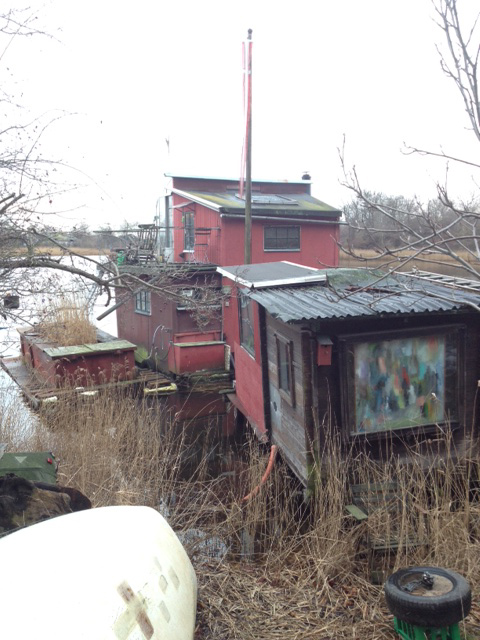
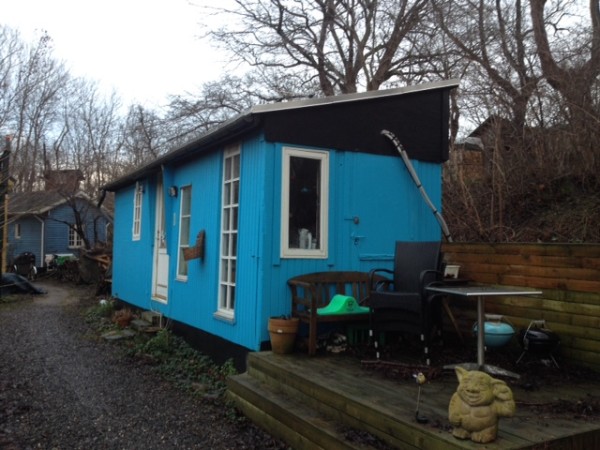

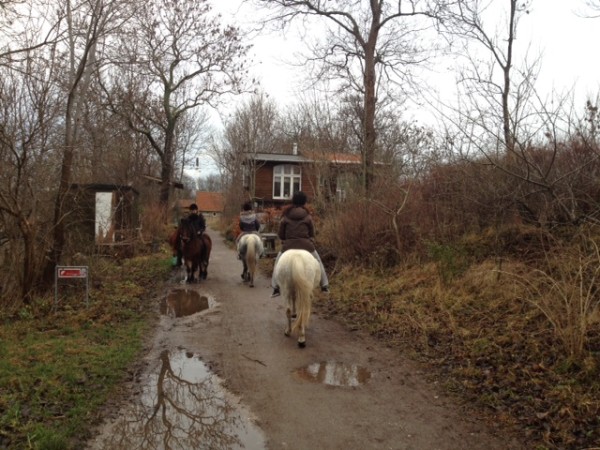
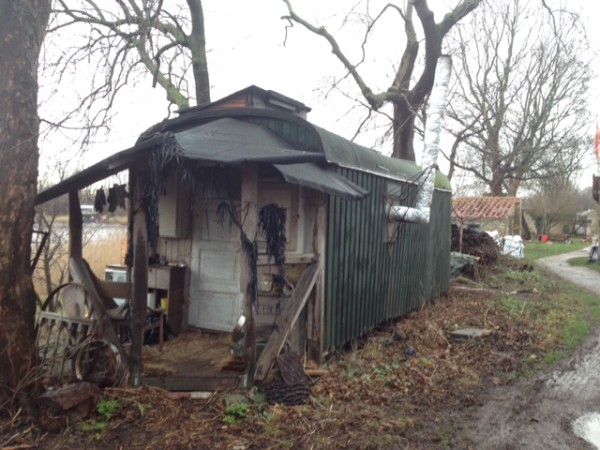
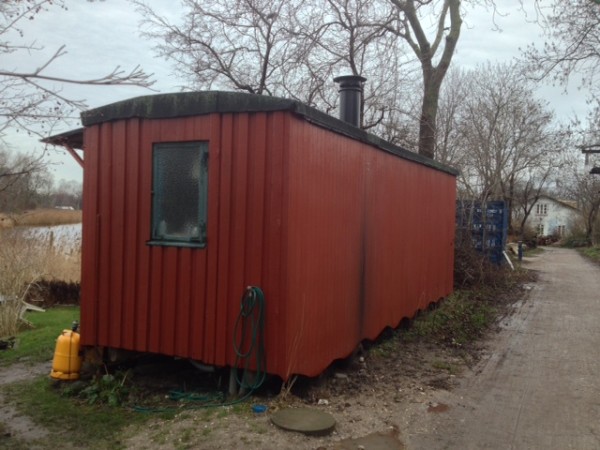
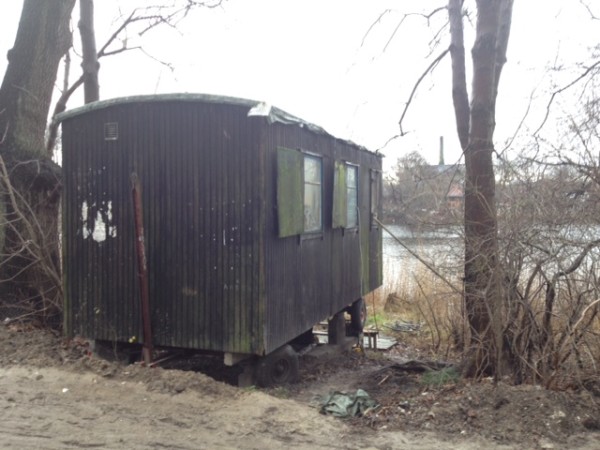
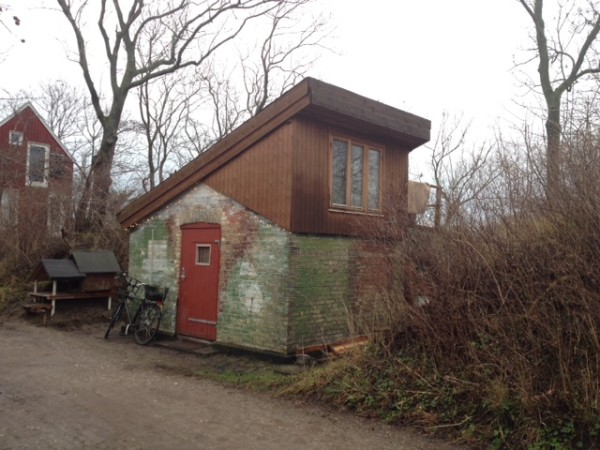
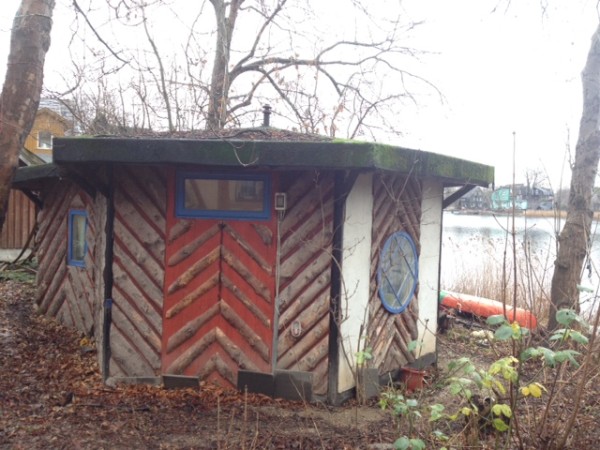
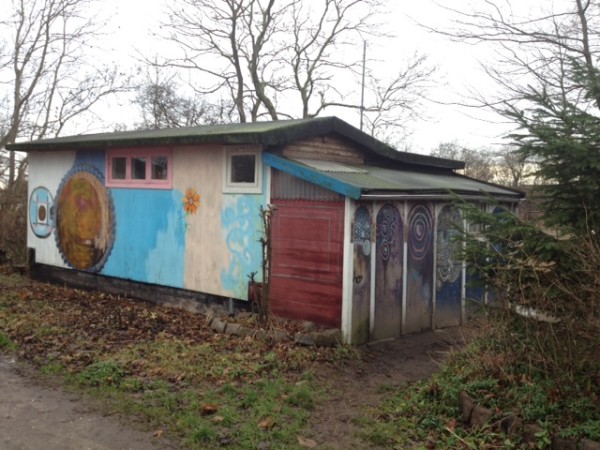
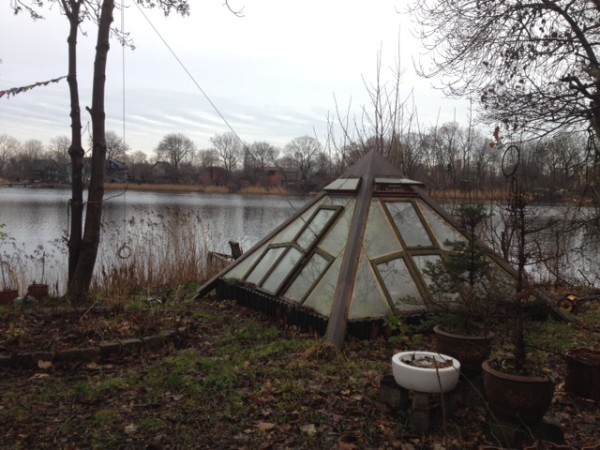
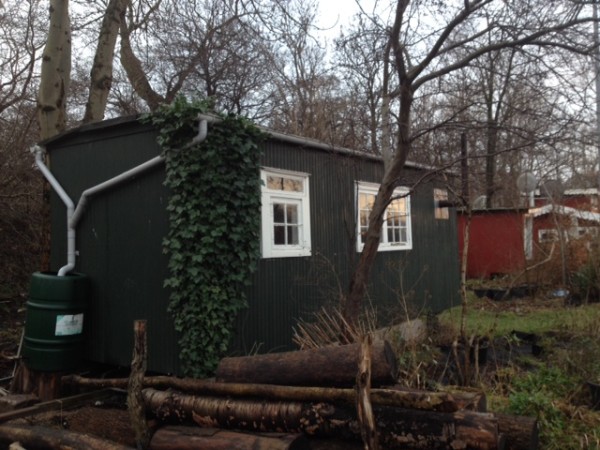
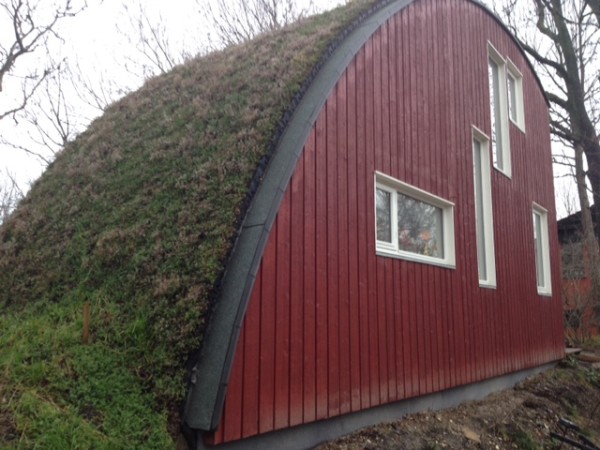
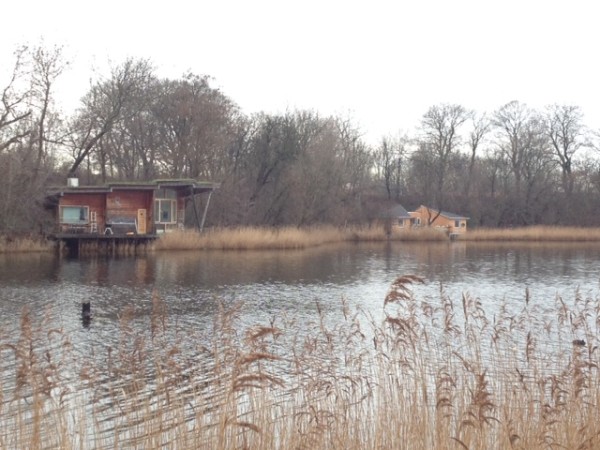
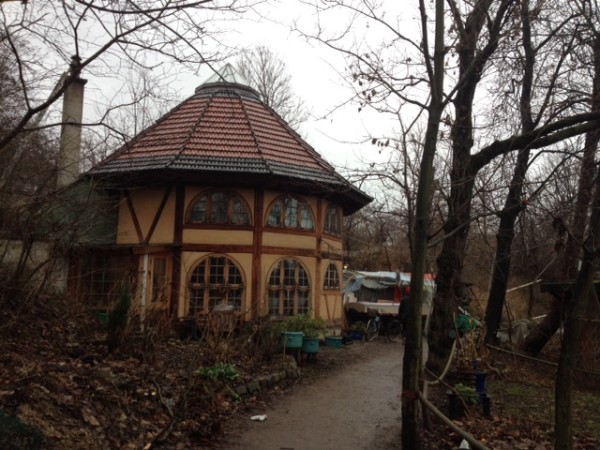

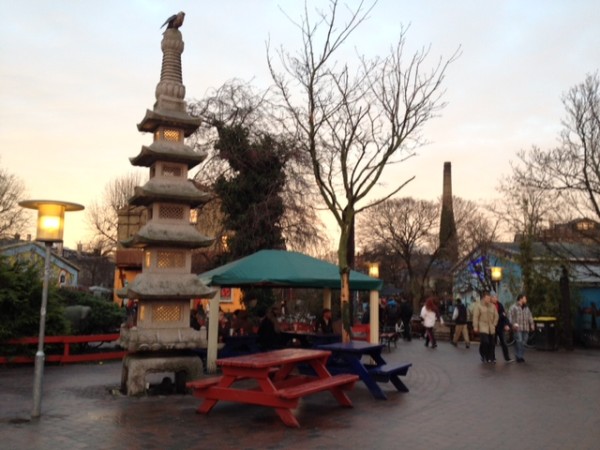

Very interesting, thanks for sharing this.
amazing,wonderful,inspiring!!!!!
This is amazing and hard to believe that they have not all been bulldozed for the sake of building high-end condos. Can you give us some idea of who the residents of Christiana are? Artists? Romani? Bohemians? And it looks like it is somewhat of a tourist attraction- is that so?
Christiania is a major tourist draw for the city. Many different types of people live in the village and quite a few of them work outside of the village in Copenhagen, so they do have to pay employment taxes.
This is amazing. You have everything here from a two story yurt (style), to a viking folke house, to a sod roof, to a Gypsy vardo, to a Hobbit hole, to a stave kirke. What a place!
All the kind of people you mention – yes 🙂 And many other kinds. I have never lived there, but yes, it is kind of a tourist attraction too – they have been fighting for years to keep the buldozers away…
Christiania is a wonderful place to go when in Copenhagen. Good food – good vibes and always inspiring. Hard to believe it ecxists in our little Denmark
You forgot to mention all the crime and drug abuse asociated with the area.
http://en.wikipedia.org/wiki/Freetown_Christiania
The dirt paths seem like they would lower the quality of life (mud and dirt on shoes). Is there a reason why there isn’t more sustainable paving?
Thanks for your question Corri. As long as I can remember (I’ve been going to Christiania since I was a teen), the roads have been unpaved in the areas around the lake. There are paved roads in the “downtown” area of the village. I think that the village dwellers look at their unpaved roads as another “middle finger” to the well-ordered cobblestone streets of the city. However, there was a young man in the village who was outside raking aggregate over his part of the street to keep down some of the mud.
Gosh, I have watched too much HGTV- I wanted to paint, remodel, etc. all of the homes instead of just enjoying them as they are. I think here in America we think we have to change every thing we see and many times it’s not for the better.
While I am sympathetic to the lifestyle embraced by the folks who live in Christiania, I see this as symbolic of what zoners and planners in the US fear. To me, the area appears unkempt and ramshackled. It’s more than the unpaved streets–it’s the piles of “stuff” and overgrown weeds. Yes, it’s obviously winter, but it’s going to take a whole lot of summer green to change my impression. I love little houses, but if we (royal) are to ever change the minds of people in the US, we should be careful to present tidy, well-kept homes. Folks, I know you are going to fuss about this, but think about it: would you want an over-grown, cluttered tiny house next to you? Consider how hard tiny-house owners must fight to get past zoning departments. We must show that we aren’t going to turn tiny house communities into old-fashioned, run-down trailer parks. I’ve considered this all day before posting. Let the screaming begin.
Up until ” Let the screaming begin”, you actually sounded reasonable
Portia, I assumed everyone would want to yell at me for the issues I raised. My apologies.
I think you raise some valid points. I also think where you have a collection of some obviously very free-spirited people, you might have a difficult time getting a collective idea of what matters as to ‘presentation’. Maybe if the bulldozers come close enough, it will inspire some attention to outward details.
Oops! hit the button too fast. In saying that, there are plenty of homes here that are beautifully cared for. I’m just glad to know that a place like this exists and is considered a precious resource.
I think the concerns over this type of housing are legitimate and must be considered before dropping all zoning issues and size/build type restrictions.
The governing principles are another complete issue.
There are several serious issues with this particular community if one reads the many online articles available.
We already have these same type problems in some neighborhoods in the United States where the residents have no stake in the land and no long term reason to fight for safety and improvement.
This is such a wonderful idea, but it reminds me
of my great-grandparents way of life. They grew up on shantyboats. When they settled on land (city laws banned the boats)they lived in small area of town called “tin town”. People built their own “cabins”. Standards today would classify them more of shacks.
I would love to visit Christiana!
It kind of reminds me of a movie called Beasts of the Wild and its about a little black girl living in a shanty town with her old alchoholic father. I think it romanticized living off the land or the gulf? Iam not sure where it was in Louisiana. But it was pretty sad. I am not a believer in being a materialistic consumer but broken down poverty and the hopelessness that comes with that is not a free eglatarian society either where we have the freedom to live how we like but with some regard for our neighbor.
Wow. What a heartbreakingly beautiful place.
Seems like “the land of the free” is in Denmark.
It seems quite depressed to me. I respect people living as they want or can afford but when babies and children are involved when do you intervene? What public assistance is available to poor folks in Denmark? I love Tiny living but a trailer park would be a step up from this place.
Another magazine aesthetics vs reality brouhaha? I can only imagine the horror some people would express should they come face to face with a typical medieval village. Some more info on Christiania http://www.humanityinaction.org/knowledgebase/280-controversial-christiania-deciding-the-fate-of-the-free-town
I have also visited Copenhagen and Christiania. My understanding is that the folks in Christiania choose to live there. It is on the immediate outskirts of Copenhagen (easy walking distance), and IMO it is not at all analogous to a shantytown, favela, ghetto, etc., in terms of abject poverty, illiteracy, poor health, and other usual signs of the involuntarily disenfranchised.
The homes are unique, the social dynamic has a real community feel, and the properties are clean.
The people we spoke to were proud of the freedoms of their small corner of the world and have fought to keep the city and others from intervening. They want it to be, and work hard to keep it, a peaceful place. So, an ironic story is how the residents hired one motorcycle gang to get rid of another motorcycle gang which tried to take over the land some years ago(yes, marijuana is an integral part of the history, but also not the sole reason for Christiania’s existence).
We may not all choose to live this way, but these folks have managed to collect and maintain a community of like-minded people in the live-and-let-live vein. I respect that.
Incidentally, Denmark, like all the Scandinavian countries, have a very strong social support (a.k.a. welfare) system for those who need it.
Finally, I will always remember Christiania as the place I discovered why the Irish and Brits call chestnuts “conkers”. There I was, having a rest following the tour, and wham! One of those suckers got me right on top of the head. Youch!
🙂
Cheers!
Liz
I appreciate your knowledge about the area, but something tells me that the drugs are at very basis for the community.
I can’t even imagine the tax burden that would be necessary in the US to support the type of social net that is in many Scandinavian countries.
I see 2 different sides of all the photos presented here.One side positive and the other negative. first on the negative. Very drab, wet, muddy, dreary, unkempt, somewhat depressing. With overcast skies that makes it appear more dismal and eery. Now on the positive there seems to be a era of freedom to do and live as one pleases. carefree and without restrictions and regulations applied..
Wow! These little houses are very cool and quite interesting. I don’t think they would let people build houses like this in the USA.
How fun to see your post. I was one of the first people to occupy a house in Christiania back in the seventies. We called the house “The Ark” and our idea was to spread the gospell to the other hippies. I recall being very cold that winter and afraid of the many roaming dogs. I don’t think we saved any souls and I gave up the entire idea after a short time in the mud and snow and cold houses. Now looking back I am happy I did not do a lot of drugs but just did Jesus LOL. It is now fun to think back and to realize I was a part of the early history of Christiania. Later in life I must admitt that I doubt if is fair for one group of people to live rent free, building code free, electricity free and tax free in the middle of a city where everyone else pay their dues. It’s a hard question to answer. Is Christiania really a social experiment or just the city turning a blind eye to the problem? I to this day don’t have the answer, but maybe it is both a very negative side product of modern society as well as a refreshing alternative to the establishment :0)